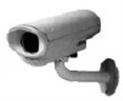





Serving The Entire
State Of Delaware
State Of Delaware
PROTECTING LIFE AND PROPERTY WITH ELECTRONICS - SINCE 1975
Residential - Commercial - Industrial - Institutional


Security cameras provides your business with the ability to monitor and time record events that take place around your facility. Not only are security cameras a deterrent against crime, but it's a useful tool for monitoring employee productivity, viewing automated operations, and providing added safety for employees and visitors. Security cameras allows you to easily and safely monitor parking lots and other remote areas and gives you a permanent record of events. It is equally useful for monitoring specific rooms or interior areas of offices, stores or manufacturing locations






Delcollo Security Technologies has installed camera systems and recording devices in schools, hospitals, shopping centers, factories, office buildings, parking lots, garages, liquor stores, mini-marts gas stations and homes. In many cases, security cameras has proven to be a perfect tool for discouraging shop-lifting, vandalism and theft. We can capturing a clear image of the perpetrator making an arrests and convictions simple.
Design
Installation
Maintenance
Repairs
Installation
Maintenance
Repairs
From the simplest to the most complex systems.
Delcollo Security Technologies can assist in the planning, design and installation of all
your electronic systems needs.


We have expert knowledge in the latest Closed Circuit television technology
We can provide you with the advice necessary to create an effective system
for your business or your home
View all of your cameras at your business or your home
on your smart phone or any computer
anywhere in the world.
When designing a surveillance system, there are three levels of clarity.
This is determined by your level of investment in equipment .
Together we can determine which one would best fit your application.
This is determined by your level of investment in equipment .
Together we can determine which one would best fit your application.
DETECTION - - - Indicates something is happening in the field of interest.
RECOGNITION - - - Determines what is happening in the field of interest.
IDENTIFICATION - - - Determines who is involved in the field of interest.
What is your required image quality.
So, how do we decide which camera to use?
Again, we need to ask: what is the reason or purpose of the camera?
With that question answered, we can now go to the next step and decide how many pixels per foot are required to obtain the desired video quality. If we are only interested in determining that someone or something is moving, a low pixel count is more than sufficient. It is when we want to identify an individual we need to have a higher pixel per foot count. The above chart shows a head shot of an individual. You will see that with a pixel count of 20 pixels per foot, we get a grainy or boxy picture. This may be sufficient to determine that "someone" was out there and that they did "something" mischievous. As the pixel count increases, we are able to discern higher and higher levels of detail. While picture "quality" is subjective, a pixel count between 30 and 40 is where most people start to see the desired levels of detail in order to recognize either an individual or license plate.
Offices
Stores
Schools
Hospitals
Shopping centers
Factories
Office buildings
Parking lots
Garages
Liquor stores
Mini-marts
Gas stations
Homes
Please call (302) 994-5400




IDENTIFICATION
Determine
who is involved
in the activity
Determine
who is involved
in the activity
RECOGNITION
Determine
what is happening
Determine
what is happening
DETECTION
Indicates
something is happening
in the field of interest.
Indicates
something is happening
in the field of interest.
100 Pixels
30 Pixels
20 Pixels
We have often seen newscasts asking: "if anyone can assist us in identifying the suspect"
followed by a grainy and out of focus video clip.
followed by a grainy and out of focus video clip.
This is because the decision to purchase a system was based solely on price.
No consideration was given to the end result.
Such decisions typically result in poor video recordings. A poor video clip will only tell us what we already know: someone robbed the local store or someone vandalized my prized car and not who. The ability to recognize individuals is based on resolution, or more precisely, pixels per foot at target. Modern video surveillance systems use Digital Video Recorders (DVR's) or Network Video Recorders (NVR's) to take the camera video stream and either convert the older analog signal to a digital format and store it on a hard drive, as in the case of a DVR, or take the already digitized camera video signal and store it on an NVR as in the case with "IP" cameras. This digitized signal is measured in pixels. A common resolution used today is 4CIF or 704 pixels x 480 pixels. D1 (broadcast quality) resolution is slightly higher with a pixel count of 720 x 480. These are the best resolutions available out of the older analog / DVR systems in use today. The pictures above illustrates the "quality" of such standard compression technology


IP, Megapixel, HD and Analog Security Cameras
Video Analytics
Management and Storage Systems
Surveillance Cameras
Why Should You Choose Delcollo Security Technologies

If the video quality is not good enough to identify who was at the scene,
Then any investment in a surveillance system is simply a waste of money.
Then any investment in a surveillance system is simply a waste of money.
